Balfour Beatty has operated on-track drain clearance trains for several years, but its decision to acquire two Class 20s to operate the train has made them of more interest. Pip Dunn finds out more.
In this article:
- The Drain Train, operated by Balfour Beatty, uses veteran Class 20 locomotives to clear railway drainage systems nationwide.
- Equipped with high-pressure jetting and suction modules, the train is a proactive tool for efficient drainage maintenance.
- The Class 20s' compact design and speed improve operational flexibility, while sustainability efforts minimize environmental impact.

As night falls, waiting at a locked gate under the M74 at Rutherglen station, in the Glasgow suburbs, is one of the more unusual places to have a rendezvous for a feature visit.
It’s a bit like the opening scene to one of those gritty northern cop dramas. And it’s one of those situations where, for peace of mind, I have an idea of the last train back into Glasgow should no one turn up.
Just after 2200, the headlights of a van light up the dank, weed-ridden location. It stops. A man gets out and unlocks the gate.
Neil Williams is expecting me. I heave a huge sigh of relief, and he takes us to Bridgeton yard (which is actually at Rutherglen, not Bridgeton).
And there, in the fading light, I see what I have come for… two veteran Class 20s, dating from November 1961 and November 1967 respectively, atop the two-wagon Balfour Beatty Drain Train.
Last year, Balfour Beatty purchased two Class 20s from Harry Needle Railroad Company (HNRC) to operate this interesting train.
The company has long had a network licence (since June 2000), as well as a train operating licence since March 2022. But because it only moved its own self-propelled plant, its operations went under the radar.
But adding locomotives to its fleet meant that Balfour Beatty was suddenly in the same league as a host of other smaller train operators.
In March 2024, the two Class 20s (20901/905) were sent to Bristol for repainting into the company’s attractive blue and white livery.
They emerged about two weeks later and headed to King’s Norton in the West Midlands, where - with the assistance of another relatively new train operator (Rail Adventure UK) - some of BB’s existing drivers who had hitherto been used to driving on track plant machines were trained on handling Class 20s.
What is a Drain Train?
The Drain Train comprises a Class 20 at each end of two KFA wagons (container flats), on which are mounted six 20ft modules which attach to the wagons using the standard twistlocks as used to load ISO containers. It then heads to worksites - and cleans out the drains.
It’s been going longer than people might think, simply because few really took any notice of it before the ‘20s’ came on the scene.
Its first job after the switch to locomotive haulage was an engagement at Penrith. Then it headed to Scotland for a series of jobs.
But it won’t be based in Scotland. It will go all over the country to any worksite where Balfour Beatty is asked by Network Rail to clear out the drains.
To see it in action is why I am at Rutherglen on a fine July evening.
There’s not really a lot here. No office, not even a portable building or a converted container. Just the two Class 20s, two wagons, two skips and a DAF tanker lorry that will be used to remove some of the sludge and detritus (the polite word for what comes out of the drains) that the train will bring back.
The Class 20s, after a varied few decades in traffic, have received a couple of modifications for their new role.
The fitting of pre-heaters means they can now be started without producing the characteristic plume of unhealthy white exhaust smoke. In fact, when both locomotives are started, they emit just the faintest whiff of exhaust.
And white LED lights under the bufferbeam now help the crew when working. These incredibly bright lights have also been fitted to the side of the wagons.
Currently, the train runs with just one Class 20 powering and the rear locomotive idling and being hauled as dead weight, although needed for the multiple reversals the train can experience.
Balfour Beatty is looking at fitting through Blue Star cables to the wagons, to allow the ‘20s’ to operate in multiple while still top-and-tailing. This will allow better acceleration and place less strain on the lead locomotive. It should be pretty straightforward, as it’s a similar system used by Network Rail on its Railhead Treatment Train wagons.
Supervisor Neil Williams and myself are soon joined by Nick Rayner, Head of Renewals and Plant for Balfour Beatty. Later we will meet with Press Officer Tom Boorman, drivers Paul Bahan and Mick Lewis, On Track Machine operator Tom Malyn, and travelling fitter Neil Insley.
With the locomotives prepped, the crew all here, and with everyone donned head to toe in orange PPE and wearing safety boots, we board and get ready.
Williams heads to the worksite in a van, as there is only room for three bodies in each Class 20 - although both had an additional third set fitted a long time ago, presumably when used on weedkilling trains by Hunslet Barclay in the 1990s.
Inside the cab of a Class 20, it’s a strange set-up with driver’s desks in opposite corners of the cab. When the driver applies the power, the duplicate power handle also moves.
That means it had a habit of ‘hitting’ any person sat in the second chair, so the crew has sensibly unscrewed it and stowed it away for the odd occasion when it might be needed (although 99.9% of the time, the Class 20s will always be cab leading when being driven).
We are booked to run as the 2308 Bridgeton Yard-Pollokshields West. And spot on time, the ground signal changes to white and Mick Lewis can ease 20905 out of the yard. We don’t go too far, just round the corner to Rutherglen East Junction, where Paul Bahan will take 20901 towards Glasgow Central.
Initially, the expectation was to run into the station, bringing with it the thought of some photos under that magnificent roof in a well-lit station. Sadly, we are held just outside to perform our reversal.
But while waiting for our red signal to go green (or at least yellow), I take this opportunity to quiz Rayner about the train. I start by asking: what does the Drain Train actually do?
Rayner replies: “It’s officially one of the two drainage remediation trains (or DRTs) that we operate. This is DRT2004. We also have a DRT2019, which was the old Sussex drain train which we acquired in 2019. Both do the same thing.
“It comprises a 10,000-litre tank of fresh water and a jetting lance capable of pressures up to 2,400 bar, or 240psi , that blasts through any silt, mud, waste, ballast or anything in the drainage channels under the track.
“Then there is a 10,000-litre tank for collecting this waste material. All of it goes into that once it’s sucked out, and that is then transferred to a truck and taken away for disposal.
“As a rule, there is zero waste to landfill, although some of the excess spent water can be disposed of into the environment. The silt and muck is filtered from the ballast and sent for use as biomass. Any ballast is disposed of - it’s not reused on the railway.”
How does it do its job?
“We travel to the site, and when we get to the protecting signals by the worksite, we then take a possession. NR likes this as it is quicker than actually entering a possession.
“The possession is then taken around the train. We then have to have the overhead power lines (or third rail) isolated if it’s on an electrified railway.
“We typically have a possession for three and a half, possibly four, hours on weekdays - almost always at night.”
At weekends, the train can often have longer in a possession, as the timetables finish earlier on a Saturday night and start later on Sunday mornings.
Adds Rayner: “For example, at Shap recently we had eight- or 12-hour shifts which gave us 84 hours to work with. That makes us more productive. It’s getting the power isolated that can take the longest, as NR staff have to physically come out to isolate it.”
Once at the worksite, and with no other train movements or threat from any live power source either above the train or to the side of the rails, the machine gets to work.
The suction boom on one of the modules, which is hydraulically controlled, is put into place. It can move 90 degrees to the left or the right, so can access the drain whatever side it is. It is moved by an operative standing at the side of the train and using a remote-control pad.
The boom is then connected to the catch pit - the end of the drain. These tend to be in the cess (the area between the rail and the lineside fence) and are typically located every 20 chains (or a quarter of a mile). The drains are interconnected, so the boom only needs to connect to one catch pit per job.
Sometimes, catch pits are in the six foot (the area between two running lines). On HS1, some are even in the four foot (the space between the two running rails). In fact, the DRT2019 has just been modified to work on HS1 for that reason.
Rayner explains: “The Drain Train is an alternative to an RRV , which acts like a suction truck. But they have a capacity issue for use on the railway, as they can only carry between 3,000 and 5,000 litres of clean water and subsequent waste, whereas we are 20,000 litres.”
The main line train therefore has much better capacity, meaning it can work longer, thus making it far more efficient.
Back at Glasgow, we are booked to wait for half an hour, but a swift turn round sees us allowed to proceed 22 minutes ahead of schedule.
The lights have to go out in the cab, to allow the driver to see the route ahead better, so we put the interview on hold, sit back and enjoy the ride. The high-intensity headlight from 20905 lights up the line ahead and we reminiscence about the days when trains had no headlights at all.
To get to Pollokshields West, we have to go through Pollokshields East - twice! Even at close to midnight, there is someone out with a video camera at one station to record the passage of the ‘20s’.
The route is via the Cathcart Circle line. As we pass Maxwell Park, driver Mick Lewis eases off 20905, which up to this point had been working its 1,000hp to rather good effect, and we slow for the entry into Pollokshields West station, where we finally meet with Tom Malyn.
Despite the last train of the day having passed, the station is still well lit, which makes for some good pictures of the locomotives, the train and the modules.
We have to wait here until NR gives us permission to go to the actual worksite, which is at Muirhouse Junction, so the team make coffees all round, and bring out a selection of cakes.
Time to restart the interview.
The Drain Train covers the whole of the UK network. Rayner explains: “We have been as far south as Brockenhurst, and up to Dundee, but this train will go pretty much anywhere we are asked to go to. The train itself has a Route Availability Classification of 6 and has a W6A gauge.”
This means there are very few places it cannot go due to its weight. And even then, NR can make an exception, especially if its attendance at a worksite is important.
Tonight’s job is its last in Scotland for a while. After this, it will be off to a job in Bletchley, and then another at Welwyn Garden City, which will take it to Christmas.
“The job starts at the output where the drainage goes out to a culvert or a field,” says Rayner.
“Before each shift we will assess the site, and the output will be the start point. That will tell us if we have a problem elsewhere on the site.”
I ask if the tragic event at Carmont in 2020, where an HST hit a landslide and three people lost their lives, has had any increased effect on its usage? Faulty drainage was cited one factor in the incident.
Rayner replies: “No, we had been clearing drains before that. But after, it’s true we have seen an increase in the use of Drain Trains.
“This is often a task on the infrastructure that gets ‘forgotten’ about. With drainage, often you can’t see it until there is a problem. But this is a preventative tool - we are proactive in identifying any potential problems and sorting them before they become an issue.”
While the Drain Train is usually only seen at work at night (owing to the need to take possessions), it can be used in the daytime as well, if required.
“We did a job at Kilsby Tunnel a couple of years ago, working alongside other contractors on-site who were doing other jobs. We advise NR when we have availability, and we can do work during lines closed and under possession for other reasons.”
While the aim is to be proactive, the train does have some ‘call outs’ after draining issues have occurred.
Adds Rayner: “We can do reactive work as well if required of course - for example, if there is flooding on a main line.”
Why has Balfour Beatty opted to take on two Class 20s of its own, and not hire in from established traction providers?
“Having our own locomotives gives us the flexibility NR needs. These ‘20s’ will only work for BB - we currently have no interest in other hire and reward work. Essentially, they will only work with the Drain Train.”
That said, Rayner hasn’t ruled out the ‘20s’ being used to move BB’s on-track plant if required, if it doesn’t affect their staple work.
“Before we acquired the Class 20s, the Drain Train was top-and-tailed by two Plasser & Theurer Dynamic Track Stabiliser machines or a Mk 5 TRAMM.
“These could only run at 50mph maximum, and they were a bit underpowered, and using the DTSs was a challenge as they didn’t have enough pull.”
The Class 20s are passed for 60mph, which makes getting paths much easier - especially for moving the train between worksites. There is nothing to stop the Class 20s being returned to their original specification of 75mph, as the reduction to 60mph was merely a paper exercise and no modification was undertaken on the locomotives.
“We could only haul 120-150 tonnes with DTSs, whereas the Class 20s could comfortably haul more, such as a 350-tonne Kirow crane if we need them to,” adds Rayner.
“Also, we went for Class 20s over other locomotives because not only were they available, they also have a short length which is better for stabling the train, which can often be in short sidings. Class 66s, for example, are too long. The train is just eight SLUs - Standard Length Unit.”
The locomotives are owned outright by BB.
“We do the ‘A-’ and ‘B-exams’, while HRNC will do anything more major such as ‘C-exams’ at Barrow Hill. The ‘A-exams’ are done out in the field, the ‘B-exams’ are usually done at our facilities at either Sandiacre or Hither Green.
“We can do ‘B-exams’ out in the field as well, but we prefer to do them in a more clinical environment of a depot.”
While not contracted to do so, HNRC has also prepared two other Class 20s (20302/311) back to main line standard. These will be made available as spare replacement locomotives should either 20901/905 not be available.
“We have a good working relationship with HNRC,” says Rayner.
Of course, although they are not worked overly hard, there’s no escaping the fact that these locomotives are 63 and 57 years old respectively.
But Rayner doesn’t see this as an issue: “We have a team of fitters and drivers who go out on every trip.”
Would Balfour Beatty hire in other locomotive types, such as ‘37s’?
“No, I can’t see that happening because we’d need to hire in other drivers, as ours are not passed on other types.”
Could more Class 20s join the Balfour Beatty fleet?
“Of course, we could possibly buy others. We are always looking at investing in our equipment to support NR.”
Regarding the wagons, Rayner says Balfour Beatty has tried to keep things as simple as possible: “All are twistlock fitted and were old second-hand KFA bogie flat wagons which we hired at first, then bought.”
The jetting wagon comprises three modules - at one end is a freshwater tank, at the other end is the suction module with a 10,000-litre tank, and in between is a berth module.
On the second wagon is an extra water tank module (also with a 10,000-litre capacity), an on-site workshop, and a tool van. The latter also holds the all-important kettle.
On this job, the train arrives at the Pollokshields West site some 20 minutes early, and then waits for about an hour. Because of track circuits, it returns the half a mile to Maxwell Park before reversing again, and 20905 leads the train into the possession site and is then taken around the train at Muirhouse Central Junction. The train can then move bi-directionally as required to suit the job.
The catch pit is located, and the pipes from module 3 of the train are connected. Then it’s a case of simply blasting the drain with high-pressure water to shift any blockages and debris, and to make the entire drainage system clear and fit for purpose again.
The staff need to steer well clear of this job when it’s in action, or they would simply get covered in muck. As a precaution, they wear face visors to prevent anything nasty getting in their eyes (or just making their faces overly dirty).
A ‘resucking’ can take place if required, if the muck is too hard to shift first time round. And there is an alarm system on the tanks to alert the staff when they are full. It’s rare that the tank is fully filled on any one job, but if they are, it can sometimes be possible to leave water at the site and continue until the tank is full of residue.
NR can ask for the work to stop and for the possession to be taken back early if it needs to, for operational reasons. But usually the work is done and the possession given back much earlier than planned.
Whether the train leaves the site earlier than planned depends on whether NR can arrange a VSTP (very short-term planning) path sorted ‘on the hoof’. Often it can, but sometimes there are possessions elsewhere on the planned route back to the yard, for other infrastructure work taking place during the night.
Tonight, all is well, and the job is wrapped up about an hour early. The train can return to Bridgeton Yard, where it will stable until its next task, and where there are two skips and a lorry for taking away the waste material. The berth module has a turntable and is rotated 90 degrees, and inside it is a conveyor belt for discharging the waste, while allowing the spent ballast to be sifted out.
The component parts of the waste are discharged from the water tank. It is raised slightly so that the end (which has a hinged vertical lid) is at the bottom and then opened. Inside there is effectively a giant plunger which (along with gravity) shoves out the accumulated waste onto the conveyor belt, which has moved on rails towards the end of the tank.
The conveyor tank is then moved along its rails to the waste tank, which also tilts, has its end opened, and discharges the sludge and debris that has been collected.
The waste is then deposited into the skips for use as biomass, or into the lorry for discharging elsewhere. The ballast is also skipped and could be reused, but not as railway ballast.
Two Scottish veterans
The two Class 20s used on the Drain Train have had varied careers, but both have a strong Scottish pedigree.
20901 started life as D8101, based at Eastfield in Glasgow from November 1961. It moved to Polmadie (a depot we passed on this trip) in October 1968, and then to Toton in February 1970, returning to Polmadie in October 1971, and back to Eastfield in March 1972.
It was renumbered 20101 in April 1974, and was then moved to Haymarket in May 1981, Motherwell in January 1983, and back to Haymarket that July.
In October 1983 it was stored out of use until fitted with dual brakes at Glasgow Works in November 1994, prior to being returned to traffic at Motherwell.
A return to Toton came in March 1985. In November 1988, it was one of seven Class 20s sold to Hunslet Barclay for operating weedkilling trains - six were overhauled as 20901-906 and 20101 was the first, becoming 20901. That work started early in 1985 and saw top-and-tail Class 20s take the Chipmans weedkilling trains across the country.
In 1998 Barclay lost the contract to operate this train to EWS, and the six Class 20/9s were sold to Direct Rail Services. Only 20901-904/906 were actually used.
In September 1999, along with 20902/903, the locomotive was used for the ‘Train for Life’ to Kosovo, and all were used by United Nations for moving trains of supplies for its peacekeeping activities. They returned by sea and road to the UK in April 2000 and put back to use.
20901 was withdrawn by DRS in September 2003 and sold to Harry Needle Railroad Company in November 2004.
It had spells in industrial use at Corus at Scunthorpe and Lafarge at Hope, and was re-registered for main line use and available for spot hire.
It was one of eight Class 20s HNRC supplied to GB Railfreight for London Underground stock moves, and in September 2012, 20901/905 were repainted in GBRf livery - which they carried until repainted into Balfour Beatty colours in March 2024.
20905 was another Scottish locomotive, being delivered new as D8325 to Polmadie in November 1967 - one of the last 11 Class 20s built, all new with dual train brakes and slow speed control equipment. It moved to Eastfield in April 1968 and then to Haymarket in May 1969, and would often be outbased at Thornton Junction or Dunfermline Townhill for working coal trains in Fife.
Renumbered as 20225 in November 1973, in July 1987 it went back to Eastfield. It left Scotland in May 1988 when allocated to Immingham (briefly), until moving to Toton in July 1988 prior to its withdrawal in January 1989 for sale to Hunslet Barclay - along with 20041/060/083/101, 20209/219 (of which 20209 was not returned to use). It became 20905 in the summer of 1989.
Its career path mirrored 20901 other than when DRS bought it, although it was never returned to traffic. The locomotive was repainted into DRS colours as late as July 2003, and it was displayed at Doncaster Works open day as such, but it never worked a train for DRS.
It moved to HNRC along with 20901-904/906, and along with 20901 it was later returned to the main line and also used by GBRf for some years.
About the author: Contributing writer Pip Dunn is a freelance journalist and author with over 25 years’ experience, and has written professionally about a variety of aspects of railway and road subjects, including intermodal operations. He was part of the RAIL editorial team from 1996 to 2006.
For a full version of this article with more images and data, Subscribe today and never miss an issue of RAIL. With a Print + Digital subscription, you’ll get each issue delivered to your door for FREE (UK only). Plus, enjoy an exclusive monthly e-newsletter from the Editor, rewards, discounts and prizes, AND full access to the latest and previous issues via the app.


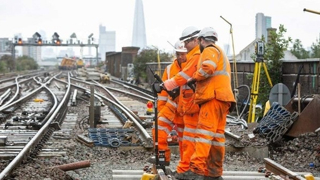
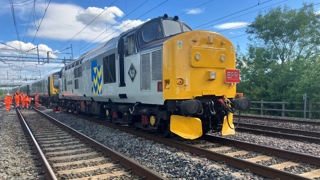

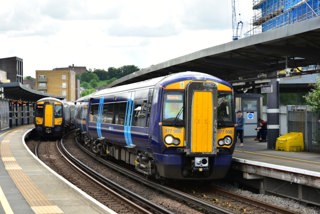





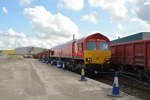

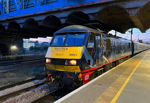



Login to comment
Comments
No comments have been made yet.